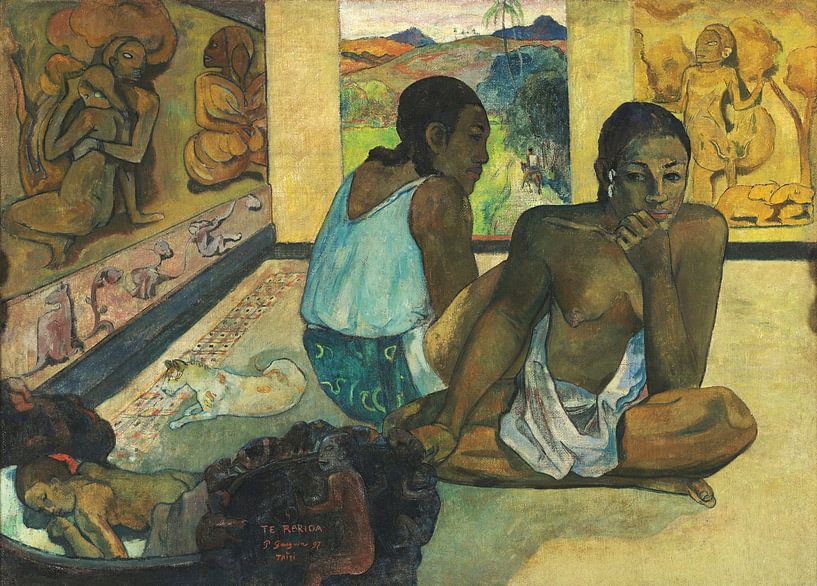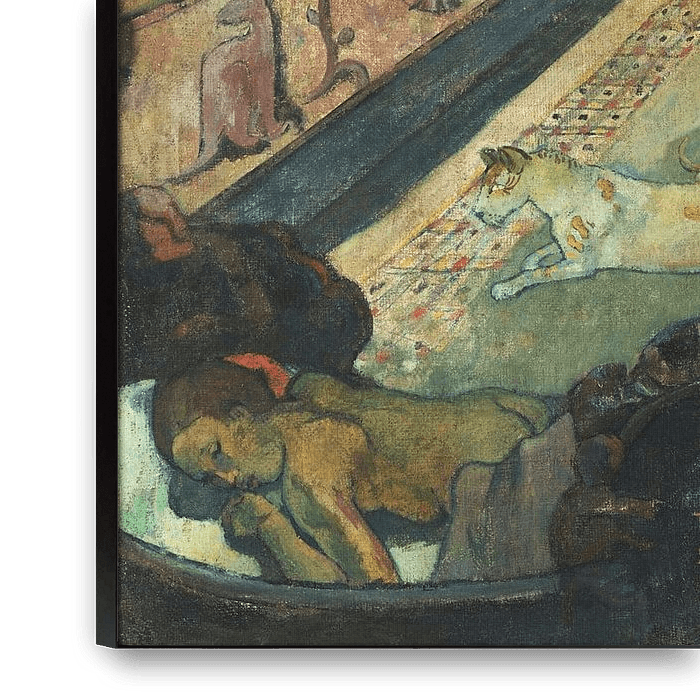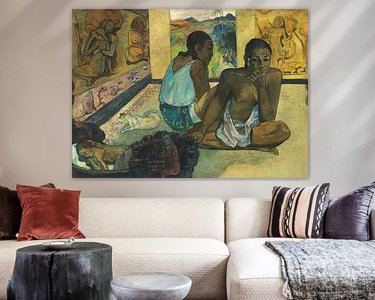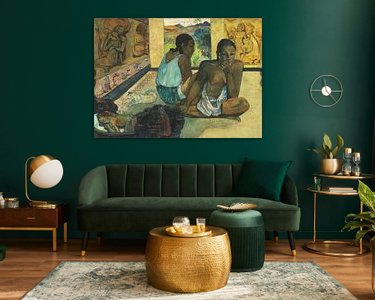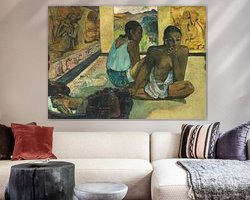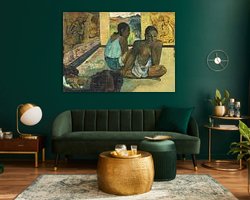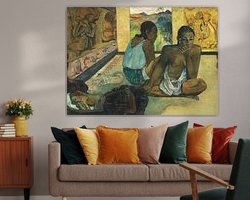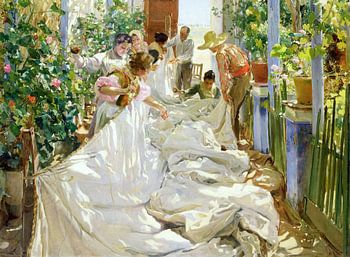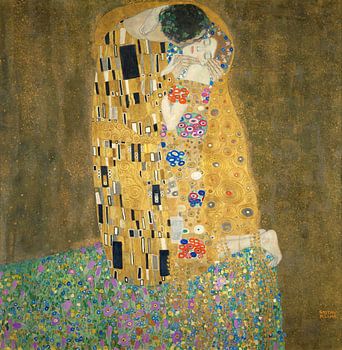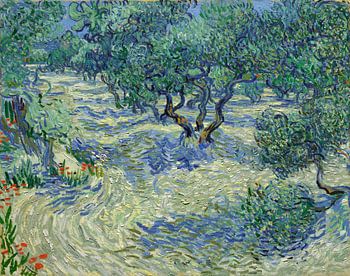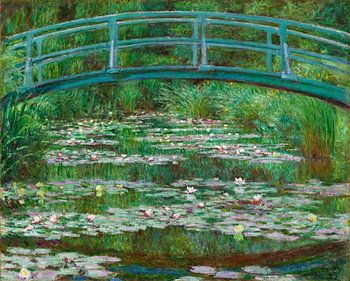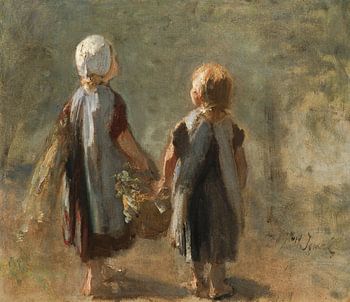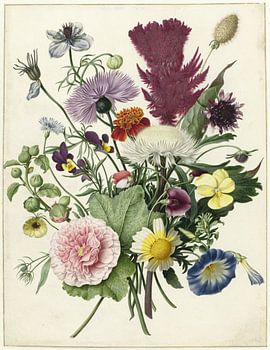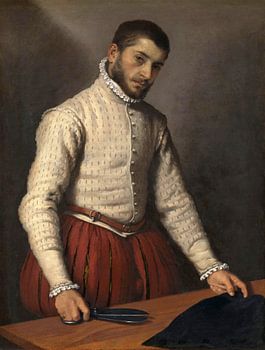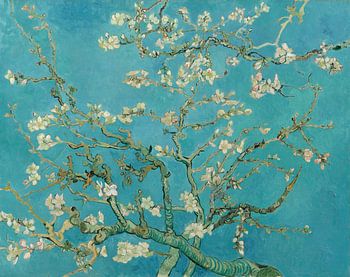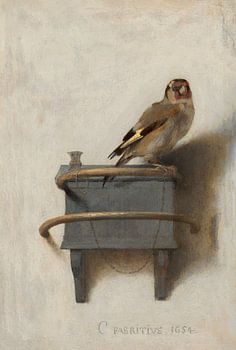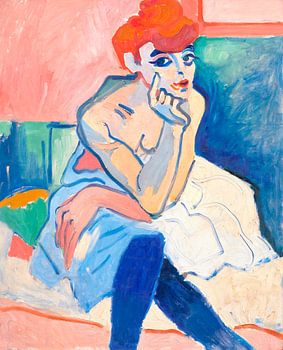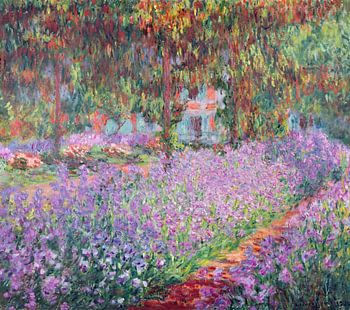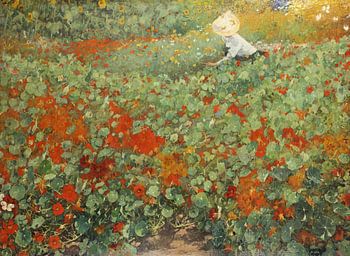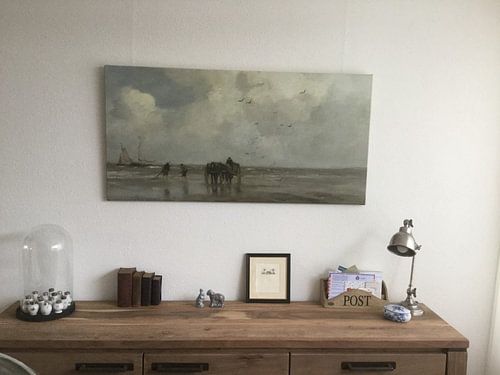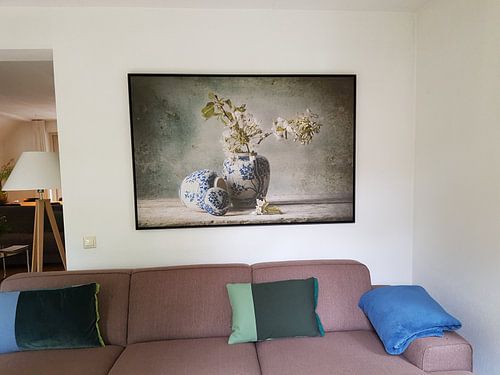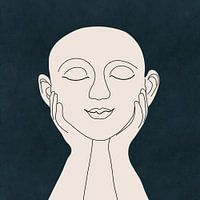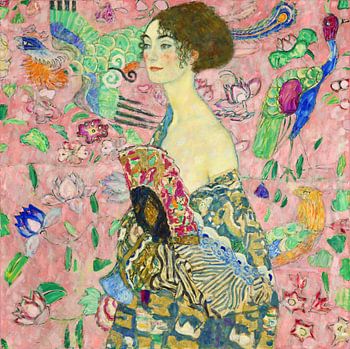
Te Rerioa, Paul Gauguin (1897)
Paul Gauguin painted this striking work a few years after settling in Tahiti, a French colony in the southern Pacific, and only weeks after Nevermore. The two canvases travelled on the same ship to France, where they were sold by Gauguin’s art dealer. The artist reported that he had produced Te Rerioa in less than ten days, taking advantage of a delay in the ship’s departure. However, the carefully constructed composition, its solemnity and balance, belie a completely spontaneous undertaking. Te Rerioa was in fact the last in a series of ambitious canvases painted by Gauguin in the preceding months.
Te Rerioa depicts two women watching over a sleeping child in a room decorated with elaborate wood reliefs. The symbolic meaning of the carvings’ subject matter — an embracing couple, hybrid creatures and vegetation — has been the subject of much speculation but like the women’s relationship, Gauguin has left it deliberately ambiguous. He titled the painting Te Rerioa (meaning ‘dream’ or ‘nightmare’ in Tahitian), writing to a friend, ‘everything is dream in this canvas, whether it be the child, the mother, the horseman on the road, or the dream of the painter.’
